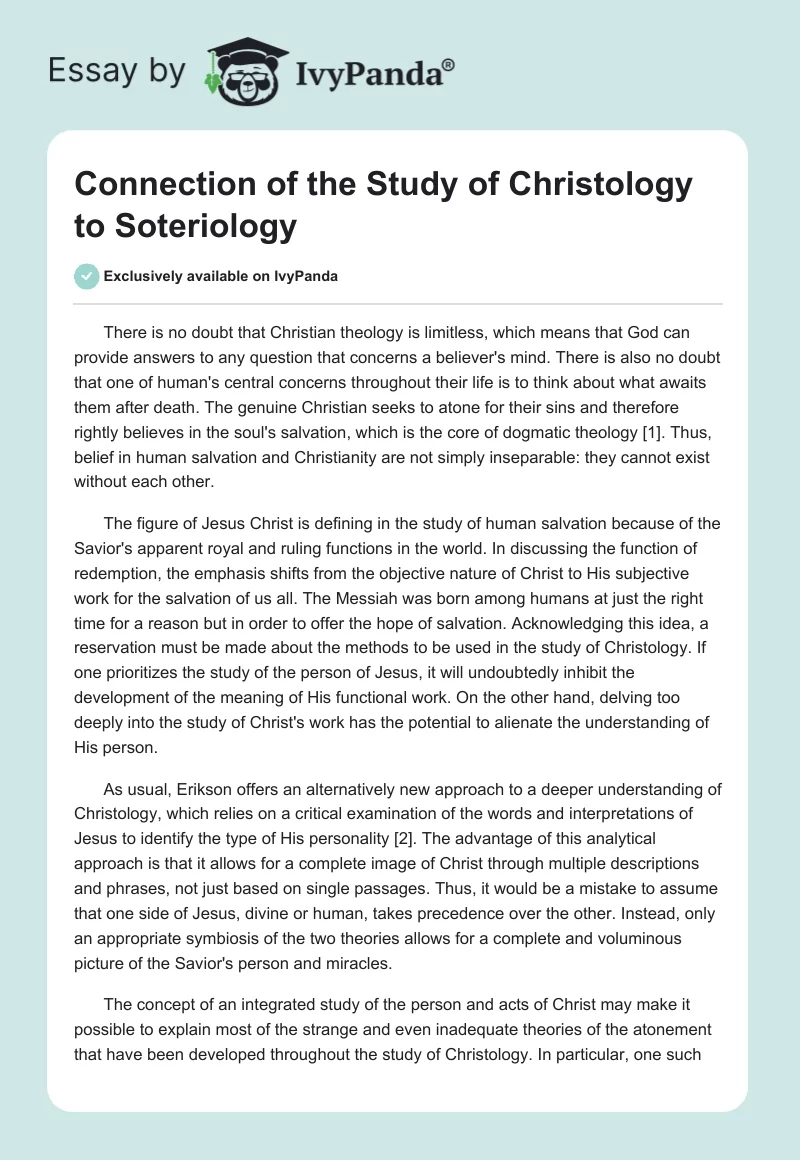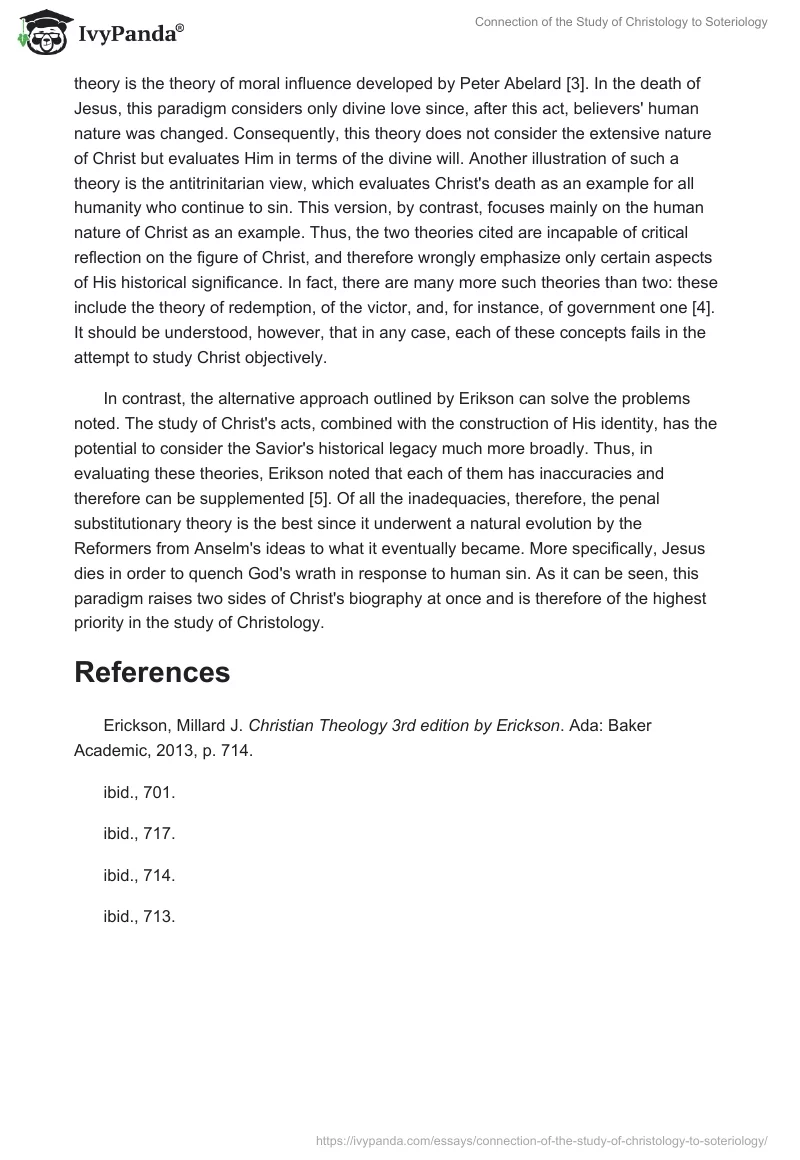There is no doubt that Christian theology is limitless, which means that God can provide answers to any question that concerns a believer’s mind. There is also no doubt that one of human’s central concerns throughout their life is to think about what awaits them after death. The genuine Christian seeks to atone for their sins and therefore rightly believes in the soul’s salvation, which is the core of dogmatic theology. Thus, belief in human salvation and Christianity are not simply inseparable: they cannot exist without each other.
The figure of Jesus Christ is defining in the study of human salvation because of the Savior’s apparent royal and ruling functions in the world. In discussing the function of redemption, the emphasis shifts from the objective nature of Christ to His subjective work for the salvation of us all. The Messiah was born among humans at just the right time for a reason but in order to offer the hope of salvation. Acknowledging this idea, a reservation must be made about the methods to be used in the study of Christology. If one prioritizes the study of the person of Jesus, it will undoubtedly inhibit the development of the meaning of His functional work. On the other hand, delving too deeply into the study of Christ’s work has the potential to alienate the understanding of His person.
As usual, Erikson offers an alternatively new approach to a deeper understanding of Christology, which relies on a critical examination of the words and interpretations of Jesus to identify the type of His personality. The advantage of this analytical approach is that it allows for a complete image of Christ through multiple descriptions and phrases, not just based on single passages. Thus, it would be a mistake to assume that one side of Jesus, divine or human, takes precedence over the other. Instead, only an appropriate symbiosis of the two theories allows for a complete and voluminous picture of the Savior’s person and miracles.
The concept of an integrated study of the person and acts of Christ may make it possible to explain most of the strange and even inadequate theories of the atonement that have been developed throughout the study of Christology. In particular, one such theory is the theory of moral influence developed by Peter Abelard. In the death of Jesus, this paradigm considers only divine love since, after this act, believers’ human nature was changed.
Consequently, this theory does not consider the extensive nature of Christ but evaluates Him in terms of the divine will. Another illustration of such a theory is the antitrinitarian view, which evaluates Christ’s death as an example for all humanity who continue to sin. This version, by contrast, focuses mainly on the human nature of Christ as an example. Thus, the two theories cited are incapable of critical reflection on the figure of Christ, and therefore wrongly emphasize only certain aspects of His historical significance. In fact, there are many more such theories than two: these include the theory of redemption, of the victor, and, for instance, of government one. It should be understood, however, that in any case, each of these concepts fails in the attempt to study Christ objectively.
In contrast, the alternative approach outlined by Erikson can solve the problems noted. The study of Christ’s acts, combined with the construction of His identity, has the potential to consider the Savior’s historical legacy much more broadly. Thus, in evaluating these theories, Erikson noted that each of them has inaccuracies and therefore can be supplemented. Of all the inadequacies, therefore, the penal substitutionary theory is the best since it underwent a natural evolution by the Reformers from Anselm’s ideas to what it eventually became. More specifically, Jesus dies in order to quench God’s wrath in response to human sin. As it can be seen, this paradigm raises two sides of Christ’s biography at once and is therefore of the highest priority in the study of Christology.
References
Erickson, Millard J. Christian Theology 3rd edition by Erickson. Ada: Baker Academic, 2013, p. 714.


